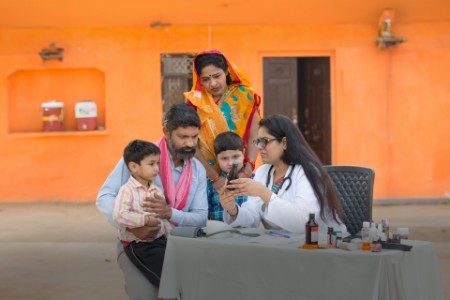Smart Health
Smart Health puts the patient at the heart of health services design, and reimagining models of care to realize personalized health at scale.
The future of health is changing rapidly, as health systems move beyond digital, beyond connected, to fully leveraging the world of artificial intelligence and smart technologies. Digital innovation is accelerating and giving rise to the care models of tomorrow — many of which can only be imagined today.
Interconnecting people, the environment, and infrastructure as a unified, intelligent, data-optimized system of care is the point where health becomes smart. This enables a realm of possibilities, as health heads into the space where the virtual and the physical worlds converge. Moreover, as integrated care platforms incorporate social determinant, sensor and wearable data, along with your health information into algorithms, a personalized, smart care experience is possible. This is an important shift, because in the wider environment the world is fast becoming smart — smart cities, cars, utilities and homes leverage the IoT, data and intelligent connected systems to support economic, social and environmental sustainability.
It is abundantly clear that the future of health is smart and that advances in smart technology, smart algorithms and smarter care models will shape the way care is delivered and experienced.
Our latest thinking
How a global pharma leader saved INR500 cr trapped in receivables in India
Deploying a strong governance around AR management enabled the company to enhance its AR performance and implement stronger credit controls.

We designed a collections strategy to reduce overall aging AR.
The tracking system manages multiple aspects across processes and stakeholders.

Cross-functional effort and process improvement reduced AR.
The improved AR management enhanced company’s financial health, reinforcing its market standing.



